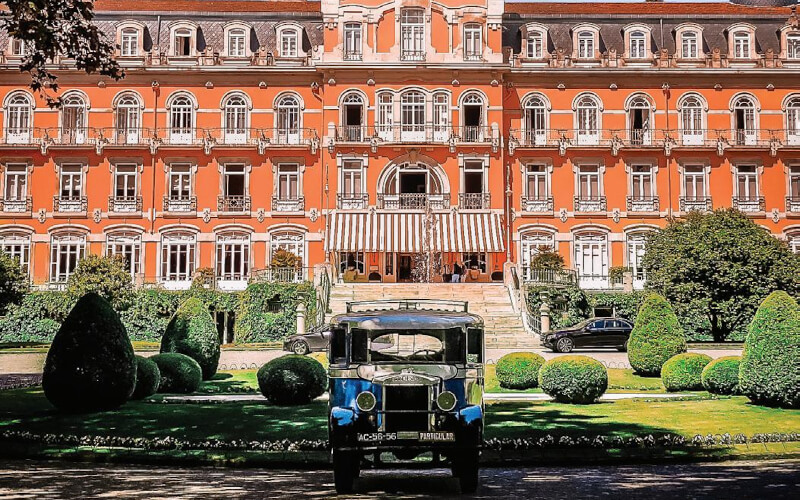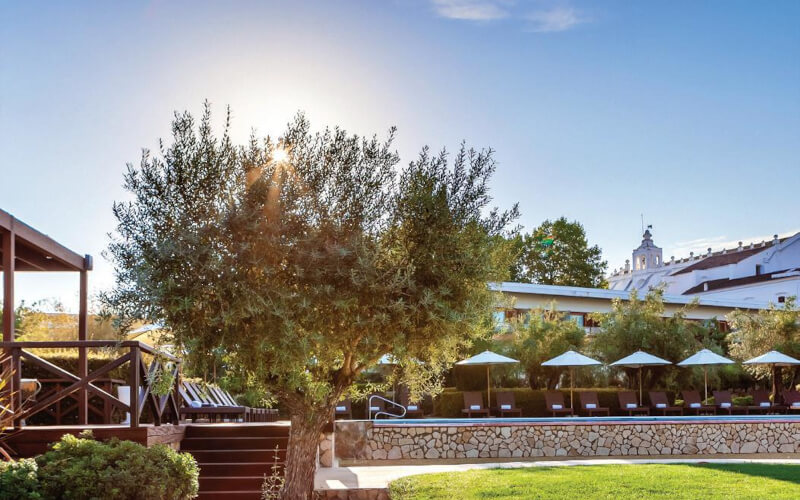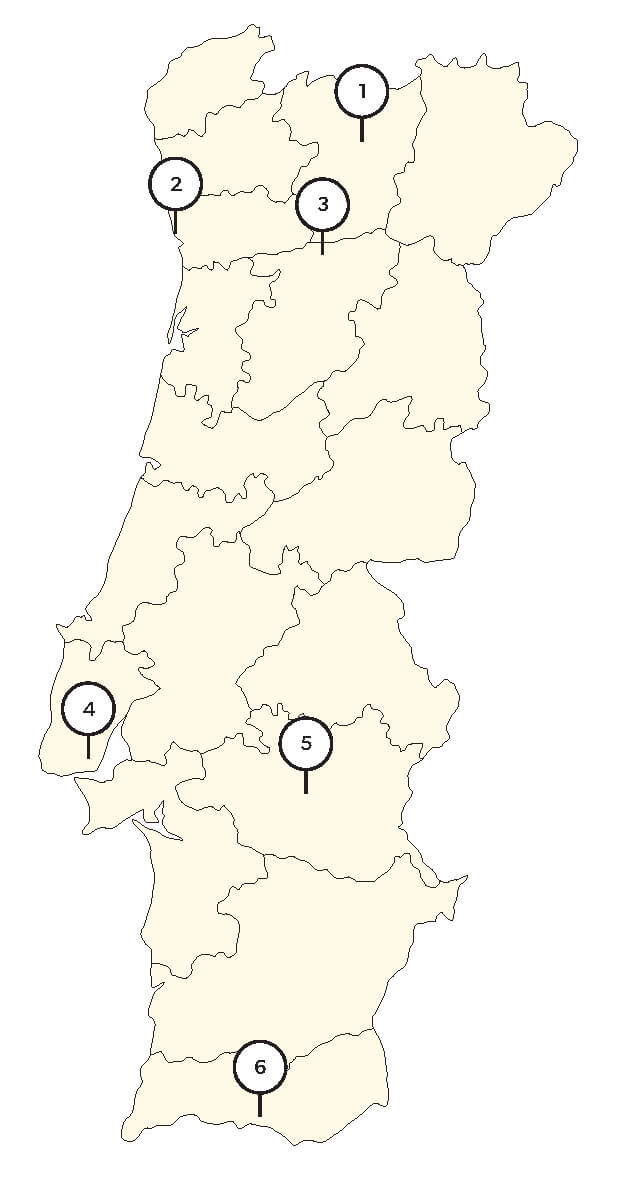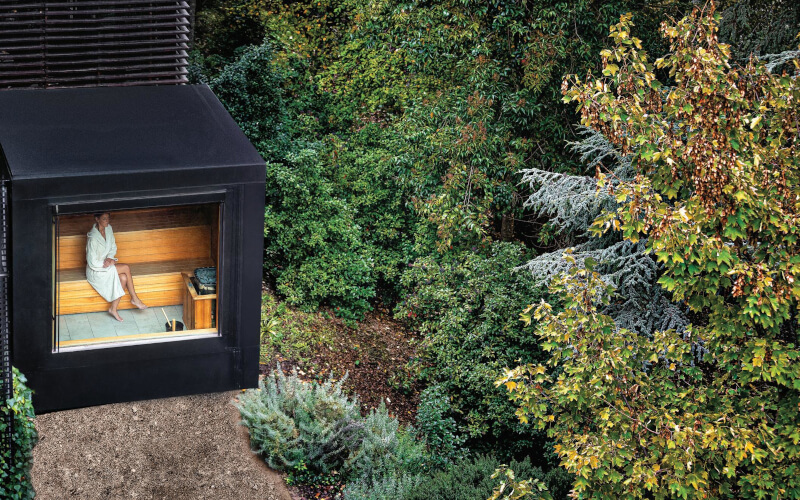On a top-to-bottom tour of Portugal’s historic springs and luxury spas, our writer discovers why the country has long been a destination for wellness and rejuvenation.
The center of most Portuguese villages is dominated by a fountain. It might be grand and richly ornamented, with a mosaic of tiles and jets arcing from gargoyles with copper spouts, or it might be just a simple tap leaking droplets into a smooth granite basin. Throughout Portugal’s cities and villages, the fountain is the place for gathering, for gossip — and for health.
When the Romans arrived on the Iberian Peninsula in the third century AD in search of tin, silver and gold, they brought with them their love of liquid: wine, aqueducts and sanitas per aquam — “health through water” (or spa, for short). Ruins across the country, from Chaves in the north to Monchique in the south, show the Romans’ endless fascination with these wells of wellness. They show, too, that luxury in Portugal didn’t start on the beaches, but began with the rich waters that flow through the country.
Still, it is the beaches that have helped ignite a reappreciation for spas in Portugal. Seeking escape from the crowds and high prices of the coastline, locals are increasingly retreating to the country’s interior. There, waiting for them, are those Roman-rooted hubs of leisure: modern-day spas that tap into the same time-tested water, the same gentle luxury on offer.
During a recent visit to Porto, lounging poolside at Vila Foz Hotel & Spa, I looked at a map of the country. It would be easy, I saw, to make a similar sanative journey, following those Roman lines through the country like a diviner, traveling from font to fountain.
I begin in the north, where the land is a solid fist of mountains, the water funneling over heel and knuckle to be mineralized and spritzed by the rock. The curative properties of the local water were first declared in the late 19th century, and it was soon bottled and sent across Europe, where its medicinal qualities were met with acclaim. Spas were popular across the continent at the time, and many were built around the villages of Gerês, Chaves and Pedras Salgadas. Portuguese King Carlos I was one hydrotherapy advocate, and he commissioned an extravagant palace near the town of Vidago, on the site of a healing spring. The monarchy was overthrown before construction was completed, and the palace instead became the Vidago Palace Hotel.
On a tour through its grounds, sales executive José Oliveira tells me that soon after its opening in 1910, the hotel was the talk of European nobility and upper-class families, who made the rounds of Vichy, Baden Baden and the western Czech Republic to take the water. “Vidago was a place beyond the realm of the normal spa circuit,” Oliveira says. “Upper-class families came here in droves.” Vidago proved Portugal’s water was as good as anywhere in Europe. “Very rare waters, / Very hot, alkaline, / Of divine qualities!” wrote local poet Artur Maria Afonso in his 1938 work, Chaves.
Strolling through the property’s 250 acres of cedar, pine and holly woodland, I come across a small pastel-colored buvette (pump room), its cupola like a Portuguese rice muffin. Inside is a spring, minded by a stately matron in white. At my request, she opens the tap and fills a glass. “Not too much,” she says. “Like all good drinks, it’s better in moderation.” It is warm, fizzy and salty, with a hint of alloy. Later, floating in the Palace pool by myself, I realize it’s the same brackish water I’m bathing in.
A few days later, I enter Alentejo, the province spanning the breadth of central Portugal. The greenery of the north slips away, replaced by a spread of golden crops over red soil. This central plain of Portugal is high and dry, sometimes too dry, and its small villages can be parched — a pity, as José Saramago reminds us in Journey to Portugal, for “a fountain without water is sadder than a ruin.” To slake their thirst, the Romans built aqueducts, which coalesce the silver streams beyond the thick walls of Évora. Like a three-dimensional mud crack in the claypan, Évora’s warren of narrow streets breaks the city apart into fawn-roofed bairros (neighborhoods). In the center of them all is the narrow Praça do Giraldo (Giraldo Square), with its baroque, eight-spouted marble fountain.
Unlike the north, where spas are for warming up, Portugal’s south is about cooling down. Set on a hill north of Évora, the Convento do Espinheiro is a white beacon promising revival. For centuries, this home of the monks of the Order of St. Jerónimo was a place of rest and politics for the monarchs, bishops and generals who shaped Iberia’s destiny. “This was the center of it all,” my guide Luzia Mestre says, our footsteps resounding through the hotel’s chapel. “The most important religious community in Iberia was here — everything was blessed.” I raise an eyebrow. “Yes,” she says, “the water, too.”
Moving from the sunny courtyard to the cloistered restaurant is like slipping into a cool pond, which is what I am soon doing. After swimming 100 lengths in the long outdoor pool, I retreat to the quiet solitude of a warm, early night on the wide stone balcony of my room. Still chilled from the pool, with the spa’s scents of olive and lavender in my nose, I feel the cozy return of lifeblood as I drink a glass of the convent’s wine and watch the rows of the vineyards fade in the darkness.
South from Alentejo, the climate takes a milder turn in the Algarve, while the amenities become heightened — fitting for Portugal’s highly visited region. Some spas here, like Anantara Vilamoura, are within resorts that are like villages unto themselves, with gardens and restaurants spread over large grounds. I flow to that southern point of the country, borne on a current of Lusophonic pleasure. The Portuguese poet Florbela Espanca never left her native country, but she might have spoken for all who take the waters of Portugal when she wrote:
What kind of magic potion
Did you give me to drink?
I even forget myself
And I can’t forget you…
Regional Rituals
Traverse the country from north to south, hopping to the coast and back inland, to experience spas of every style.
1 Vidago Palace Hotel
Considered one of the most luxurious hotels in Portugal, the Vidago Palace’s Belle Époque stylings meld with modern design. In addition to treatment rooms, the serene, minimalist thermal spa features experience showers, hydromassage baths and indoor and outdoor swimming pools, all drawing from the region’s curative waters.
2 Vila Foz Hotel & Spa
A sophisticated renovation of a manor house, Vila Foz opened in 2019 to become one of the newest spa hotels on the Portuguese horizon, which extends right out the front door and over the Atlantic. Unwind by the light-flooded indoor pool after a personalized massage or facial featuring custom-made oils.
3 Six Senses Douro Valley
This resort’s spa emphasizes its setting in the world’s oldest demarcated wine region by offering treatments infused with concentrated ingredients from local grapes. Go for the two-hour Warming Schist Vinotherapy, which begins with full-body exfoliation using grapeseed pearls and port.
4 Corinthia Lisbon
At Corinthia’s spa, try the Portuguese Journey, an 80-minute treatment inspired by Portuguese naval discoveries that incorporates local salt, clove buds and cinnamon, before enjoying the hammam, Jacuzzi, sauna, cold plunge and ice fountain.
5 Convento do Espinheiro
Many of the Convento do Espinheiro Spa’s services are held in the convent’s ornate chapel, a UNESCO World Heritage Site. Treatment ingredients are locally sourced: Olive oil, rosemary and lavender provide varying levels of intensity and therapy.
6 Anantara Vilamoura Algarve Resort
Set inland from the famous Praia da Falésia (Cliff Beach), Anantara’s debut European property offers signature massages, as well as body treatments at its spa for golfers fresh off one of the several nearby courses, fusing Mediterranean therapies and energetic Asian techniques.






